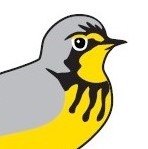By Stu Mackenzie, Migration Program Manager, Bird Studies Canada

Red Knot Photo: Mark Peck
Bird Studies Canada is excited to announce a new international partnership to study the ecology of the endangered rufa subspecies of Red Knot at its major wintering site in Bahia Lomas, Tierra del Fuego, Chile. Results from this work will inform management decisions and conservation action at this critical habitat at the southern end of the Atlantic Flyway. Benefits will extend beyond Red Knots to other species of conservation concern that depend on the site, including the Hudsonian Godwit and White-rumped Sandpiper. Bird Studies Canada will be working in collaboration with Universidad Santo Tomas, Conserve Wildlife Foundation of New Jersey, Environment and Climate Change Canada, the Western Hemisphere Shorebird Reserve Network, and International Conservation Fund of Canada, with support from the National Fish and Wildlife Foundation.
This project will apply the cutting-edge technology and collaborative power of the Motus Wildlife Tracking System to gaining previously inaccessible knowledge of endangered migratory shorebirds. The Motus Wildlife Tracking System is an international collaborative research network that uses radio telemetry to track migratory wildlife. It is a program of Bird Studies Canada in partnership with Acadia University and other researchers and organizations.
In research with Motus, animals are equipped with radio ‘nano-tags,’ and their movements are picked up by an extensive array of receiving stations. There are currently more than 175 projects and collaborating organizations using Motus, which collectively maintain over 400 receiving stations in 22 countries and three continents. Since 2014, 12,087 animals of 146 species have been tagged. Each tag tells the story of the life and behaviour of an individual, and the results are contributing to the conservation of these species.
I encourage you to explore the growing collection of publications documenting the important research being accomplished using Motus. You can also enjoy Bird Studies Canada’s new Motus video to discover how the system works, and how it is revealing information needed to address urgent conservation threats.
We’re excited to be progressing on important ‘behind-the-scenes’ work that makes Motus function, with support from CANARIE’s Research Software Program. Over the past two years, Bird Studies Canada has been developing critical software and database infrastructure to automate the management of the tens of millions of detections that come from Motus stations each year. We are pleased to announce that a major release of this software is coming up in the New Year, and will provide users with instant access to the most recent data. We will also be releasing a public tracking tool, which will allow anyone who is interested to explore the movements of all animals tracked using Motus since 2014. Aspects of this exploration tool are already available through the Motus receiver map page.
Motus is yielding great results for the conservation of migratory animals, thanks to extensive partnerships between researchers, organizations, individuals, and supporters. A network of this scale requires substantial resources. Priorities range from designing and implementing species-specific projects, to expanding into new frontiers, maintaining the physical and computational infrastructure, and supporting and developing new tools that will accelerate research and education on the ecology and conservation of migratory animals.
Are you interested in being part of this exciting and critical work for birds? We’d love to hear from you. Get involved by donating, adopting a station, or becoming a collaborator. You can get in touch with us at motus@birdscanada.org. With your support, we can continue to develop one of the world’s largest collaborative research and conservation efforts.
Thank you for helping to make this remarkable initiative possible.

